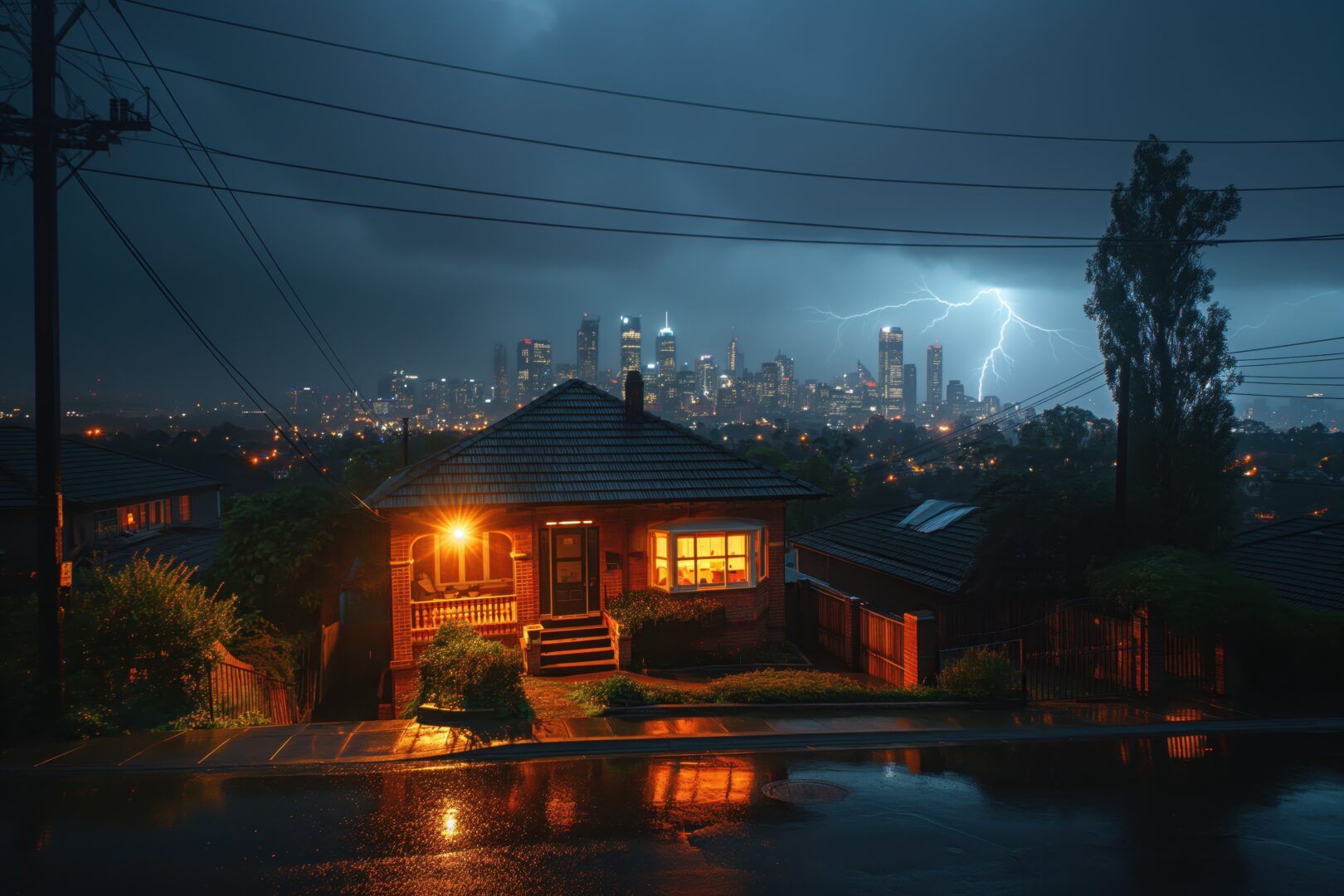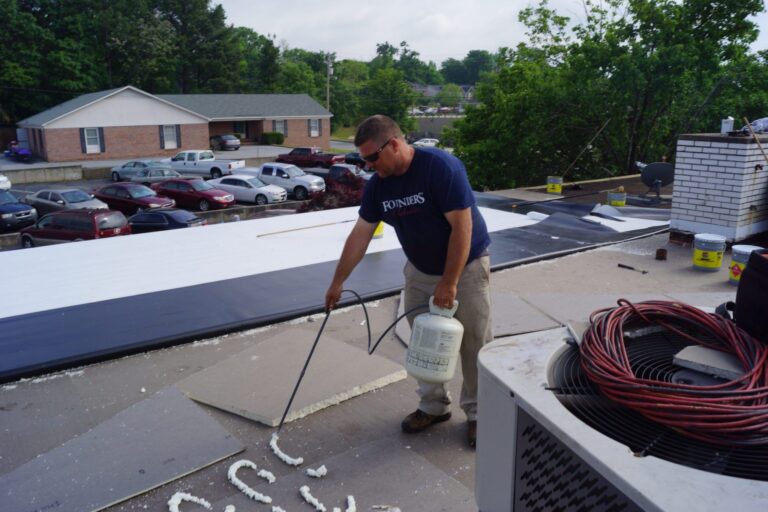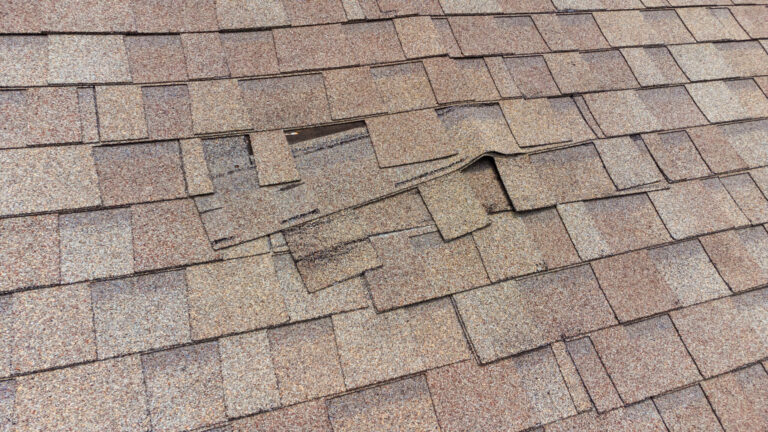
Assessing and Addressing Roof Damage After A Storm
As residents of the Mid-South region, we are quite familiar with the aftermath of destructive seasonal weather events. When a powerful storm sweeps through your neighborhood, the first thing that comes to mind is often the safety of your loved ones and your property. However, once the storm subsides and you breathe a sigh of relief, you must not overlook one of the most vulnerable parts of your home: your roof. Roof storm damage can be a hidden danger, and addressing issues promptly is essential to prevent further problems and ensure the longevity of your roof. In this comprehensive guide, we will explore the importance of assessing and addressing roofing storm damage, how to conduct a roof storm damage inspection, and the steps to take for roof repair and insurance claims.
Understanding Roof Damage After a Storm
Storm damage to your roof can manifest in various ways, depending on the type and intensity of the storm. The primary culprits for roof damage are hailstorms, heavy rain, strong winds, and falling debris such as tree branches. Below are common types of storm damage that your roof may experience:
- Hailstorm Roof Damage: Hail can be particularly destructive to roofs. Hailstones can vary in size and density, causing dents, cracks, or even punctures in roofing materials.
- Storm or Tornado Roof Damage: General storm damage can be caused by strong winds, heavy rain, and flying debris. It can lead to loose or missing shingles, damaged flashing, and water leaks. Tornado damage can leave behind even greater destruction.
The Importance of a Roof Storm Damage Inspection
After a storm, it is tempting to assume that your roof is still intact, especially if you don’t see visible signs of damage from the ground. However, many issues can go unnoticed without a thorough roof storm damage inspection. Here are some reasons why a timely examination is crucial:
- Hidden Damage: Roof storm damage isn’t always visible from the ground. Small cracks, loose shingles, and other subtle issues may become significant problems if left unaddressed over time.
- Water Intrusion: Even minor damage can lead to water infiltration, which can cause extensive damage to your home’s interior, including insulation, ceilings, and walls.
- Insurance Claims: You will need documentation of the damage to make a successful insurance claim. A professional inspection report can be invaluable in this process.
Steps to Address Roof Storm Damage
Now that you know any storm damage to your roof should be left to roofing professionals, it is time to prevent further issues and protect your home. Here are the basic steps to take in your repair timeline:
- Contact MidSouth Construction: Our roofing experts are experienced in storm damage repairs. They will assess the damage and determine if your damage is enough to file an insurance claim. We can prepare a storm damage repair estimate and work with your insurance carrier during the resolution of your claim.
- Temporary Emergency Repairs: In some cases, temporary repairs may be necessary to prevent further water intrusion. Your roofing contractor can advise you on these measures.
- Insurance Claims: Contact your insurance company after your roof has been inspected by MidSouth Construction and it has been determined that your damage warrants filing a claim. We will serve as your voice with your insurance carrier. There is a time limit for filing a claim so this step is important!
- Choose Materials: Work with your roofing contractor to choose the appropriate roofing materials for repair or replacement. Storms can impact different roofing materials differently. Asphalt shingles may be prone to damage from hail and high winds, while metal roofs can sustain dents and damage from hail. Consider upgrading to more durable options if needed.
- Complete Repairs: Once you receive approval from your insurance company, schedule the repairs with your roofing contractor, who can walk you through every part of the process.
- Preventive Maintenance: After repairs are completed, consider investing in regular roof maintenance to extend its lifespan and prevent future storm damage.
Conducting a Roof Storm Damage Inspection
Below is a general guide used by roofing professionals when assessing the damage to a roof after a storm:
- Safety First: Safety is always paramount. Your storm damage repair professionals use proper safety equipment and check immediately to determine if there are any concerns.
- Visual Inspection: They begin by visually inspecting your roof from the ground and looking for obvious signs of damage, such as missing or damaged shingles, bent flashing, or debris on the roof. Check
- Gutters and Downspouts: They examine your gutters and downspouts for granules from shingles, which can indicate roof damage. They also check for dents or other signs of damage.
- Attic Inspection: They will enter your attic and check for signs of water leaks or daylight coming through the roof.
Filing a Roof Storm Damage Insurance Claim
Navigating the insurance claim process can be challenging, but ensuring you receive the necessary compensation for repairs or replacement is essential. Here are some tips for filing a successful roof storm damage insurance claim:
- Document the Damage: Take clear photos and videos of the damage before making any temporary repairs. These will serve as evidence for your claim. Contact Your Insurance Company
- Promptly: Report the damage to your insurance company immediately. They will guide you through the process and provide you with a claim number.
- Keep Detailed Records: Maintain a record of all communications with your insurance company, including emails and phone calls. Note the names of the representatives with whom you speak.
- Review Your Policy: Familiarize yourself with your insurance policy to understand your coverage limits, deductibles, and any specific requirements for storm damage claims.
- Stay Informed: Stay informed about the progress of your claim and follow up with your insurance company if there are delays or issues. Roof storm damage is a serious concern that can lead to costly repairs if not addressed promptly.
By understanding the types of damage, conducting thorough inspections, and following the necessary steps for repairs and insurance claims, you can safeguard your home and ensure the longevity of your roof. Remember that professional assistance is invaluable during this process. Contact MidSouth Construction’s experienced roofing contractors for all of your roofing needs. Protecting your roof means protecting your home, and that is always a worthwhile investment.
Table of Contents
Relevant Articles

10 Questions To Ask A Commercial Roofer Before You Hire Them
10 Questions to Ask a Commercial Roof Contractor before You Hire them If you are a property management company, a commercial property owner, or perhaps on the board of directors for a condo property, roofing repairs and replacements can be a tough topic to bring up, but it doesn’t have to be. At MidSouth Construction we understand that your primary

Top 10 Roof Repairs Every Homeowner Should Know About
Fast. Affordable. Quality Roof Repairs Top 10 Essential Roof Repairs Every Homeowner Should Know About The roof is your home’s first line of defense against the elements, and it’s crucial to keep it in top shape. Whether you’re a new homeowner or have lived in your house for years, understanding essential roofing repairs can save you time and money in

ROOFING 101: ESSENTIAL REPAIRS AND MAINTENANCE
ROOFING 101: ESSENTIAL REPAIRS AND MAINTENANCE Searching for “roofing companies near me” in Nashville? How do you know who to trust? This blog post takes the guesswork out of finding a quality roofer. We’ll share insider tips on what to look for, questions to ask, and how to ensure you get the best value for your investment. Understanding Common Roof
